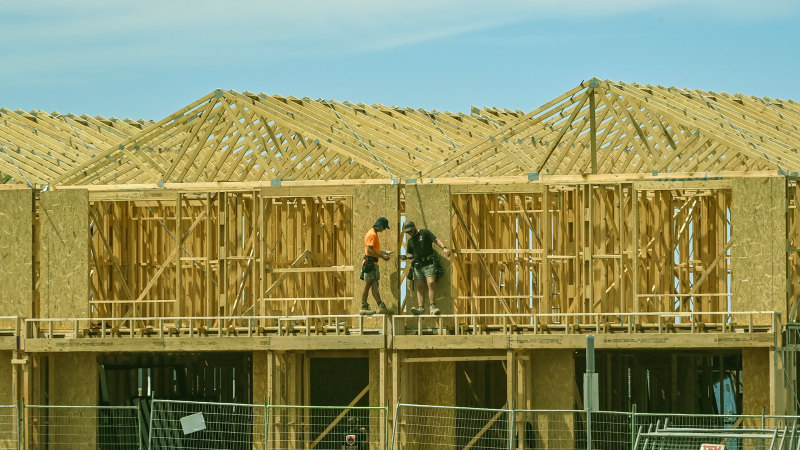
A radical proposal to permit the construction of three-storey apartments and townhouses throughout Australia’s capital cities could add 67,000 homes annually, significantly reduce rents, and provide young people with the opportunity to live closer to their city centers. This ambitious plan, outlined by the independent Grattan Institute think tank, aims to address the pressing housing affordability crisis in the nation.
The Grattan Institute estimates that Melbourne alone could see an additional 431,000 homes within 15 kilometers of its city center if property owners were allowed to build without needing specialized planning permits. In Sydney, the potential is even greater, with up to one million new homes possible if planning regulations are relaxed. The proposal includes granting default permission for larger apartment blocks of six storeys or more around major transit hubs and commercial centers, a move that would streamline the current complex planning processes.
Transforming Urban Landscapes
According to Brendan Coates, the housing program director at the Grattan Institute, such sweeping changes in planning rules could have a profound impact on every capital city by increasing the availability of homes. Currently, new housing construction in Australia is below 200,000 annually, but Coates suggests this could increase by 67,000 homes each year under the new plan.
“Australia needs a housing policy revolution,” Coates stated. “The equation is simple: If we build more homes where people most want to live, housing will be cheaper and our cities will be wealthier, healthier, and more vibrant.”
Under the proposed changes, rents could decrease by 12% over a decade, and the median home price, currently at $870,000, could drop by $100,000. Additionally, the plan is projected to boost Australian GDP by $25 billion annually and reduce greenhouse gas emissions by enabling more people to live closer to public transport, schools, and employment opportunities.
Current Zoning Challenges
Currently, the majority of land within 30 kilometers of central Sydney and 87% near central Melbourne is zoned for housing of three storeys or fewer. In Brisbane, Perth, and Adelaide, about three-quarters of land is zoned for two storeys or fewer. This restrictive zoning contributes to Australia’s capital cities having some of the lowest population densities among developed nations with populations exceeding one million.
The Grattan Institute’s findings highlight how these restrictions, combined with a complex web of planning laws, hinder the development of new homes and limit young people’s access to affordable housing near job opportunities. Between 2001 and 2024, several inner-city suburbs in Sydney and Melbourne experienced a decline in residents under 30, while many in their 30s and 40s left Sydney in search of affordable housing.
Heritage Listings and Legal Hurdles
Heritage listings further complicate housing development. In Melbourne, nearly 30% of residential land within 10 kilometers of the city center is under heritage overlays, restricting new construction. Legal challenges also pose significant delays; for instance, the Victorian Civil and Administrative Tribunal overturned 49% of council rejections for new home developments, with applicants waiting an average of 193 days for a decision.
While both the NSW and Victorian governments have initiated major planning reforms, the Grattan Institute argues these efforts fall short of the necessary changes to significantly increase the supply of affordable housing in prime locations.
Market Dynamics and Government Initiatives
Recent data from Cotality indicates that home values nationally rose by 1.1% in October, marking the strongest monthly gain since mid-2023. Over the past year, property values have increased by 6.1%. This surge has been attributed in part to the government’s expanded 5% deposit scheme for first-time buyers, which some critics argue has inadvertently driven prices higher.
Opposition housing spokesman Andrew Bragg criticized the government, saying, “They’ve effectively forced the prices up because they’ve failed to build houses and they’ve opened up this 5% deposit scheme to everyone.”
Housing Minister Clare O’Neil reported that 5,778 guarantees were issued under the deposit scheme last month, up by 1,878 from the previous year. The median price for properties under the scheme was $710,000, significantly below the national median of $870,000.
Insurance and Natural Disaster Risks
Another factor influencing housing costs is insurance, which has risen at twice the rate of inflation in recent years. A recent roundtable in Canberra, involving insurers, banks, and government officials, focused on ensuring new homes are not built in areas prone to natural disasters, such as bushfires and floods, which could lead to prohibitively high insurance premiums.
Suncorp CEO Steve Johnston emphasized the importance of avoiding construction in high-risk areas, stating, “It is vital that in the push to build more homes, they are not located in areas that would expose occupants to disasters that would make insurance prohibitively expensive.”
As Australia grapples with these complex housing challenges, the proposed changes by the Grattan Institute offer a bold vision for the future. Whether these plans will be adopted and effectively implemented remains to be seen, but the potential benefits for housing affordability and urban development are significant.






